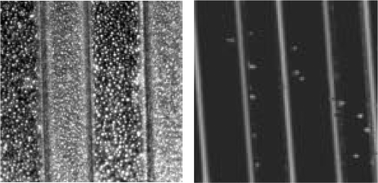Planar nitric oxide (NO)-selective ultramicroelectrode sensor for measuring localized NO surface concentrations at xerogel microarrays
Abstract
A planar ultramicroelectrode nitric oxide (NO) sensor was fabricated to measure the local NO surface concentrations from NO-releasing microarrays of varying geometries. The sensor consisted of platinized Pt (25 µm)


 Please wait while we load your content...
Please wait while we load your content...